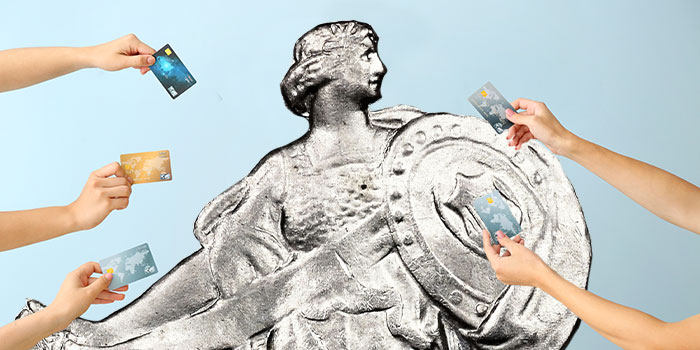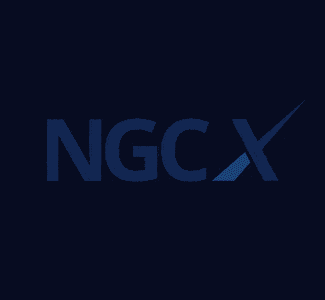Be wary of using credit in numismatic purchases
By Jeff Garrett for Numismatic Guaranty Corporation (NGC) ……
Last week, Heritage Auctions offered the Maurice Storck Collection that contained several interesting coins bought in person at the 1954 King Farouk Palace Sale. These coins had been off the market for decades and performed extremely well. Mr. Storck was a coin dealer at the time and probably handled some great coins acquired in Cairo. Luckily for later generations, he saved a few for modern-day collectors.
John J. Pittman, another famous American collector, also attended the Farouk sale. Pittman is legendary for having had the foresight to mortgage his home to acquire the funds needed to buy coins in the 1954 King Farouk Palace Sale. His guts and determination were well-rewarded when he managed to capture some of the finest coins in the collection at bargain prices. Coins that initially sold for hundreds of dollars sold for hundreds of thousands when he offered his collection in the 1990s. This was a man who used debt to his great advantage.
In the 1950s, US coins were extremely affordable, and John J. Pittman had the advantage of being a very astute collector. He did not go after trophy coins, which even then sold for several thousand dollars. Pittman concentrated on obtaining value for the limited funds at his disposal. One of my favorite examples is the Gem Proof 1833 Half Eagle that Pittman purchased for $635. The coin sold for $467,500 at his estate auction in 1997, and more recently sold for $1,350,000 in 2016.
Clearly, Pittman’s use of credit for this unique opportunity paid off handsomely.
Credit in the Coin Market
The numismatic landscape has changed dramatically from what it was in the 1950s.
Great coins are much more expensive, and the risk of mortgaging one’s home to make a purchase would be considered ill-advised by almost everyone. However, this does not mean credit is not used in many numismatic transactions in the rare coin market today. Coin dealers have been using the leverage of credit for about as long as there have been coin dealers. Some collectors also get into the act when trying to make a major purchase.
The use of credit for numismatic purposes is not a bad thing, but it must be used responsibly. Many coin dealers over the years have gone down in flames from using credit irresponsibly. I have also seen collectors get themselves into similar circumstances. Collecting rare coins can be an exhilarating and almost-addictive habit, but using credit to buy coins beyond your means can lead to severe financial stress.
For years, auction houses have offered dealers and collectors special extended terms for credit-worthy clients when selling a large collection. They know the extra dollars chasing lots will greatly improve results. Most individuals use this credit wisely, and the auction houses are very selective about whom they offer credit. However, problems do occur, and anyone who has conducted auctions can tell you that this is one of the hardest parts of the business.
Loan Trouble
Auction houses are not the only companies lending money for the purchase of art and collectibles. A recent Wall Street Journal article (July 18-19, 2020) estimates that nearly $25 billion in loans are outstanding globally on fine art. Many private-banking divisions of banks such as JPMorgan Chase, Bank of America, and Citigroup make loans to wealthy clients looking to leverage their purchases. Record-low interest rates and a rising stock market have tempted many to take out loans on their art collection to invest elsewhere.
Those with extensive coin collections can encounter similar situations. The collection can act as collateral for a low-interest loan to unlock cash for another purchase opportunity. Most will lend about 50% of the estimated wholesale value, with interest of about 5% to 8% per year. Several companies are willing to lend money at these favorable rates by using the coins as collateral. I have never used any of these companies myself, but I have been told to be cautious of not only interest rates but also any fees associated with maintaining the loans. These fees can add up, especially over long periods of time.
I have known several clients who utilized this strategy when a “once-in-a-lifetime” opportunity presented itself. As can be seen from the recent numismatic headlines, dozens of six- and seven-figure coins are coming to market in the coming months. I’m sure that some of these numismatic treasures will be secured with the use of credit. A quick Google search will provide a long list of companies willing to lend money on rare coins or bullion.
Avoid Credit in Numismatic Purchases When You Can
My usual advice to most collectors is to avoid buying coins on credit when possible. I have seen many dealers and collectors make purchases with little regard to price as long as they have time to pay. Buying on credit also diminishes your negotiating power. The use of credit cards is even worse when factoring in the extraordinarily high-interest rates most charge. Saving to purchase something that is beyond your immediate means is usually the wiser choice.
Rather than collecting long-term, leverage can be used with credit for numismatic speculation. Speculation often leads to financial problems for all but the most astute. Several years ago, one of my clients thought generic gold coins were extremely underpriced. He managed to find someone who would lend him money to purchase something that seemed so risk-free. To his dismay, generic gold coin premiums dropped over 40% in just a couple of years, wiping out his initial investment.
In a recent interview on CNBC, the famous “Oracle of Omaha”, Warren Buffett, stated that there are three ways to go broke: liquor, ladies, and leverage. I’m not sure who he was talking about, but a few of my friends instantly came to mind.
Using credit can be a great choice when faced with a unique opportunity, such as John J. Pittman’s in 1954. Credit can also be a wonderful tool when purchasing a fast-appreciating asset.
In recent years, most rare coin prices have been anything but fast appreciating, and the borrowing cost adds substantially to the final purchase price. This can mean the difference between success and failure over the long-term.
Not every major auction conducted in the last 25 years has offered extended credit terms — or any terms for that matter. When David Akers sold the John J. Pittman collection in the late 1990s for about $30 million, it was strictly cash and carry. No credit or checks accepted; buyers had to wire funds before the coins were released. Indeed, Dave Akers was old school and one of the last of his kind.






